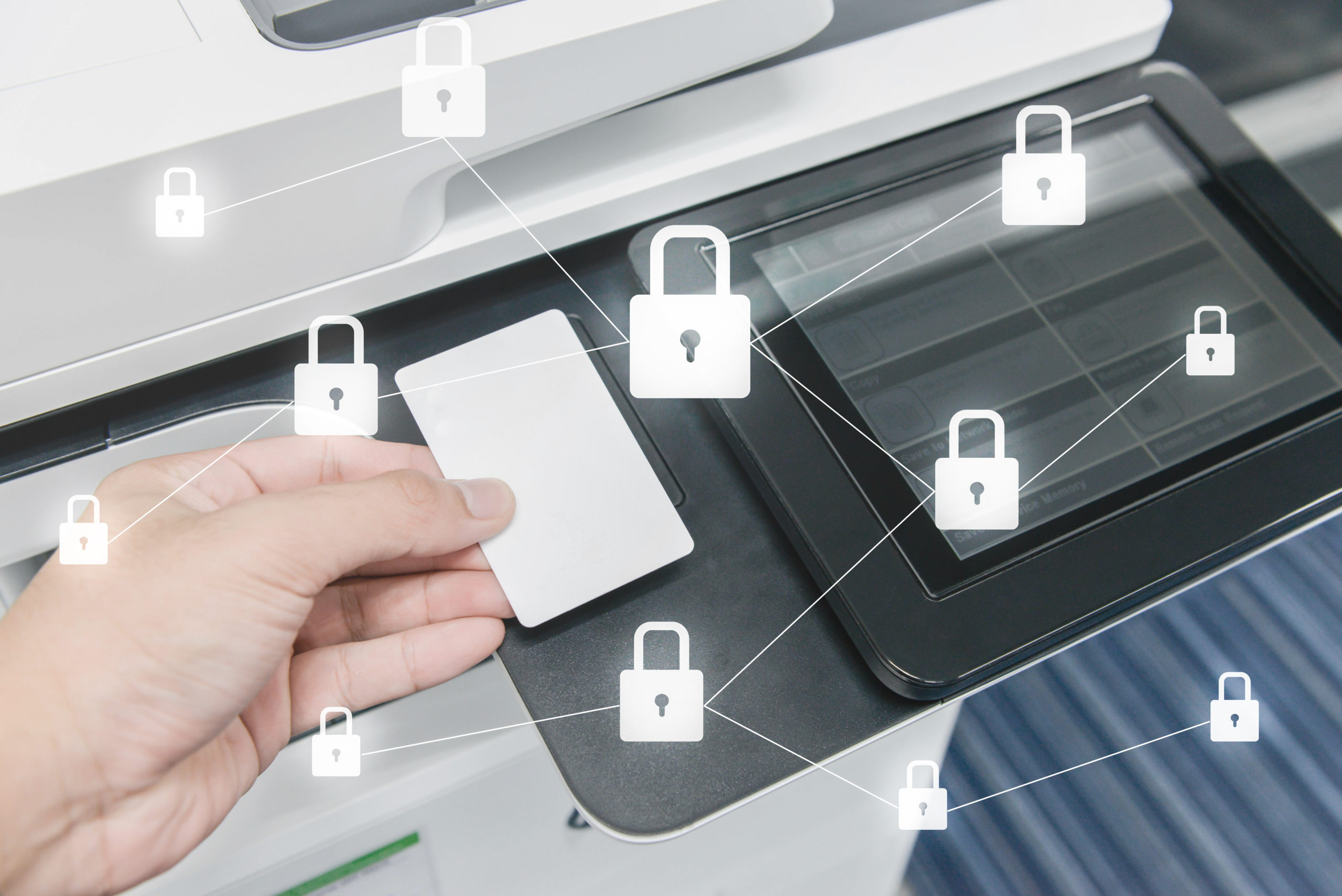We all get overwhelmed with IT security information and how to best protect our businesses, but there is a blind spot that few are addressing. As an organization, one of the most important tasks is to make sure the data in your business is protected. Whether it be client, employee, or corporate information, measures should be in place to keep data secure. The following areas are often unknown risks to businesses.
- Your printers can be compromised without your anti-virus alerting you.
- Most hacking starts with social engineering and phishing emails. This technique can compromise your network printers without executing the virus on a computer. Thus, leaving you unaware and unprotected.
- Your printers’ pass information in plain text. This can include usernames, file paths, server information, and even passwords in the printer job language (PJL) headers.
Printers interact with some of the most sensitive data that businesses have, yet they are not part of most organizations’ IT security plans and technology roadmaps. More than $3.5 billion were reportedly lost in the US in 2019 due to cybercrime attacks.
4 Simple Steps to Increase Your Print Security Today
1. Upgrade to More Secure Devices
The first step to increasing your print security should involve an assessment of your current printer fleet. If your print devices are old and outdated, or simply not built with security in mind, your business could be at risk. Manufacturers such as HP, Ricoh, and Canon are known for their focus on security and their extensive line of thoroughly protected devices.
2. Encrypt Your Data
We recommend encrypting any and all data that passes through your company. To help keep your sensitive information secure, you should encrypt ALL network traffic. This includes print jobs that are sent through the network. Doing this will make it increasingly more difficult for hackers to steal your data.
3. Give Employees a PIN, ID & Password
To increase your print security within the office, have employees use a PIN or ID. This could also be in the form of a login card. Using passwords like a PIN, ID, or card in order to gain access to print jobs prevents data breaches due to print jobs being left, unclaimed in the printer’s exit tray.
4. Check & Implement Firmware Updates
Are your printers equipped with the most up-to-date security features and firmware? Implementing regular check-ins with your devices ensures the latest firmware updates have been installed and are properly working. You should be doing this with every device that interacts with your employees and company—whether at the main office or at a remote location, including home offices.
There are ways to protect your business and measures you can put in place to ensure that your company won’t be a victim of any of these evolving threats. All of this can be done without disrupting the productivity or workflow of your day-to-day.
